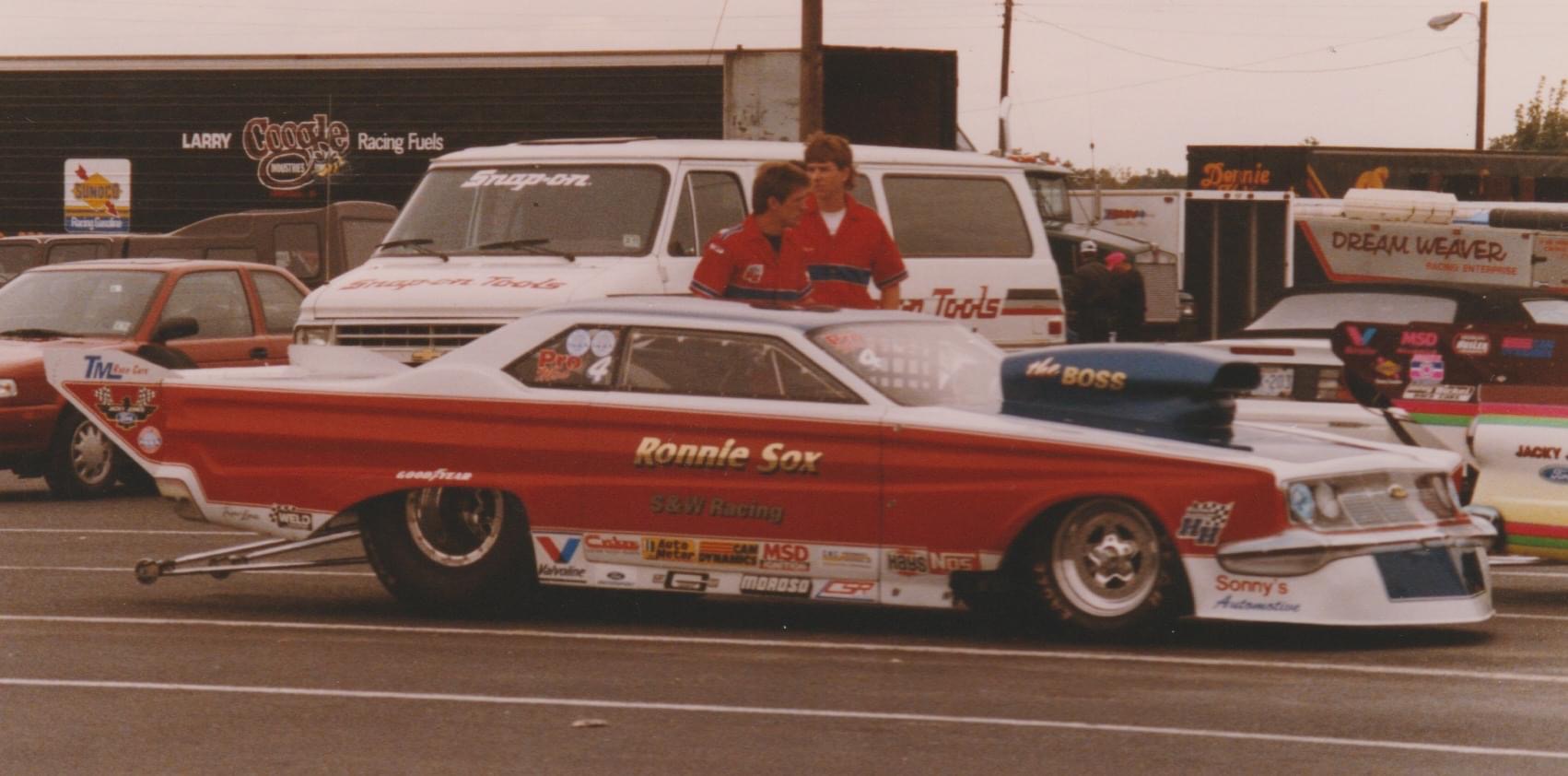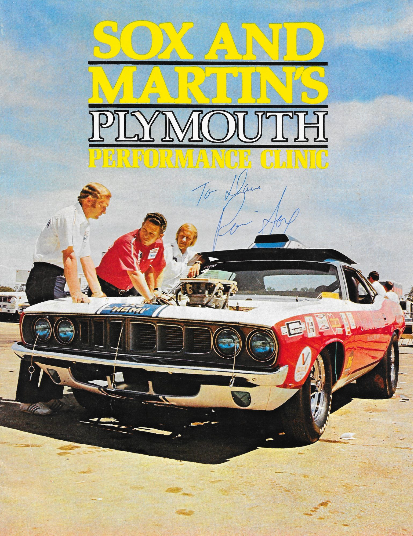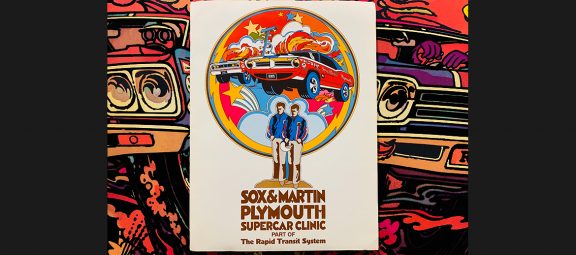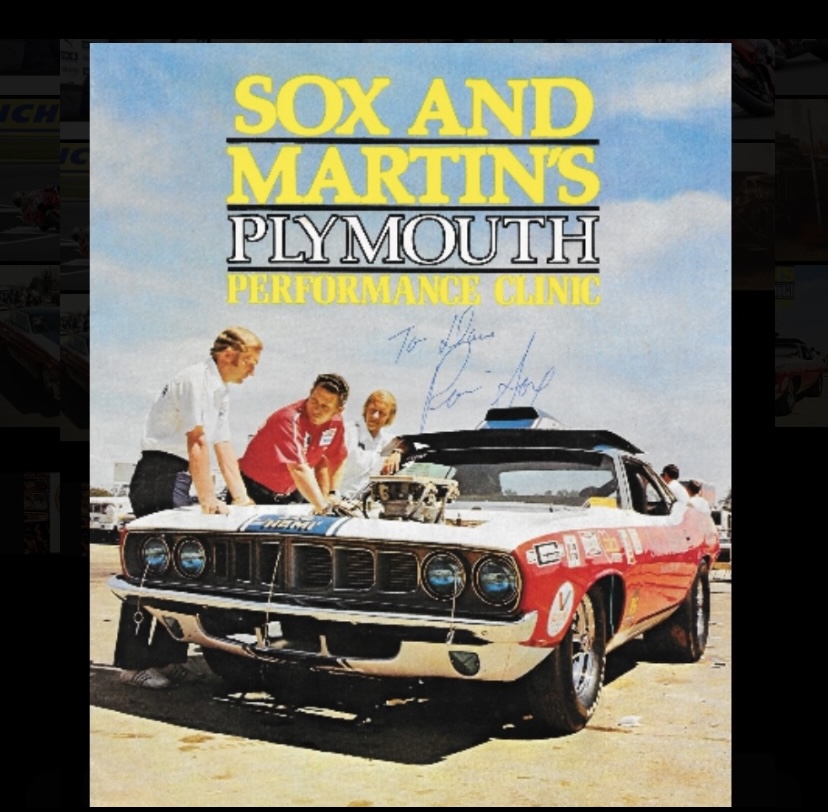The Legacy of Sox & Martin: Trailblazing Drag Racing PR with Tom Richardson
For Mopar® enthusiasts, the name Sox & Martin is synonymous with drag racing glory. During the 1960s and early ’70s, their red, white, and blue Plymouth Super Stockers and Pro Stockers, powered by the formidable HEMI® V8 engines, dominated drag strips across America.
The success of this legendary team was not merely a product of powerful engines and skilled driving but also a testament to a well-oiled machine of team dynamics and marketing prowess.
At the heart of Sox & Martin’s triumphs was the seamless collaboration between driver Ronnie Sox, crew chief Jake King, and team manager Buddy Martin. While
His expertise in managing the team, securing sponsorships, and leveraging media relations played a crucial role in their sustained success.
Buddy Martin’s strategic vision was instrumental in transforming Sox & Martin from a competitive team into a marketing powerhouse. Recognizing the importance of aligning with major sponsors, Martin focused much of his energy on Chrysler Corporation, particularly the Plymouth brand. In 1967, under a new sponsorship agreement, Sox & Martin shifted to racing Plymouth Belvedere GTX models and introduced the innovative “Supercar Clinics” at Chrysler/Plymouth dealerships.
 These clinics not only boosted sales but also provided a platform for fans and potential customers to engage directly with the team and learn about high-performance cars and parts.
These clinics not only boosted sales but also provided a platform for fans and potential customers to engage directly with the team and learn about high-performance cars and parts.
To manage the growing demands of sponsorship and media relations, Martin hired Tom Richardson, a young PR professional with a background in drag racing and marketing.
Richardson, who had previously worked at Hurst Performance and raced a Super Stock HEMI engine-powered Dodge Coronet A990, brought a fresh perspective to the team. His hiring was a strategic move to ensure that Sox & Martin’s expanding responsibilities were met without compromising their focus on racing.
Richardson’s impact was profound. He orchestrated numerous dealership appearances and developed marketing materials, including the iconic 1969 Plymouth Supercar Clinic booklet. His role involved crafting press releases, press kits, and ensuring the team’s presence in major automotive publications. Richardson’s meticulous attention to detail and innovative approach to PR helped Sox & Martin maintain a high profile in the automotive world.
One of Richardson’s notable contributions was designing the team’s uniforms in 1970, ensuring that the Sox & Martin crew not only performed exceptionally but also looked the part of racing rock stars.
His efforts extended beyond the track, and he played a pivotal role in organizing memorable events, including the team’s visit to the White House in 1971 to be honored by President Nixon. This recognition underscored the significant impact Sox & Martin had on the sport of drag racing.
Despite the challenges and rigorous schedule, Richardson understood the importance of balancing professionalism with moments of levity.
Anecdotes of the team’s antics, such as the infamous burnout incident involving a Chrysler station wagon and a rental car, highlight the camaraderie and spirit that defined the Sox & Martin team.
As budget cuts and changes in the dealership clinic programs led to Richardson’s departure at the end of 1971, 


his legacy lived on. His trailblazing efforts in race team PR set a standard that would influence the industry for years to come.
Today, dedicated PR professionals and social media experts manage the image and media relations of motorsports teams across various racing organizations, building on the foundation laid by pioneers like Richardson.
Tom Richardson’s tenure with Sox & Martin was more than just a chapter in drag racing history; it was a period of innovation and excellence in motorsports marketing.
His role in elevating the Sox & Martin team to legendary status is a testament to the power of effective PR and the enduring legacy of those who shaped the sport.
Leave a Reply